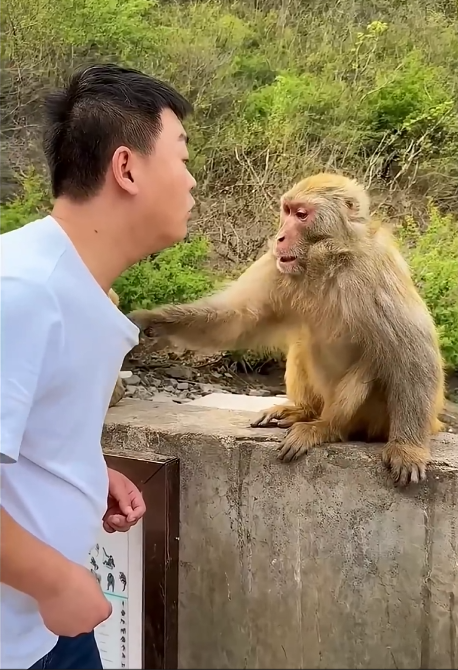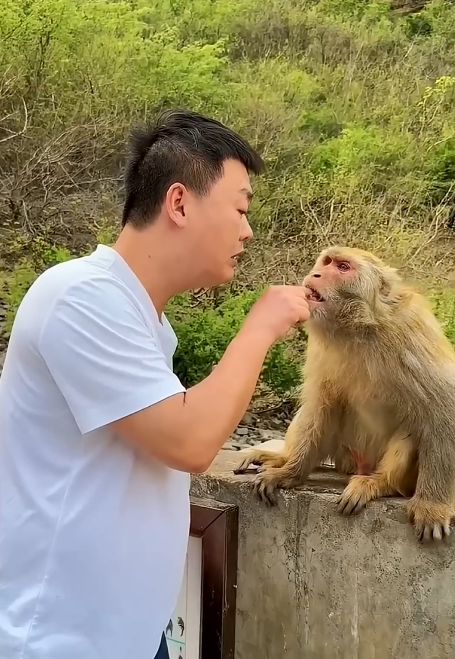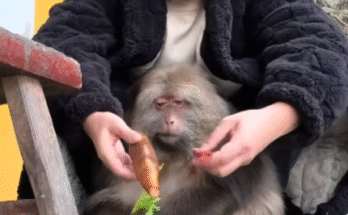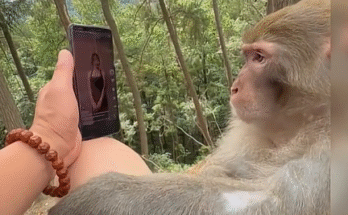
Walking through the gates of a Chinese monkey park early in the morning is like stepping into another world. The air is crisp, tinged with the earthy scent of soil, bamboo, and leaves. Mist rises from the small streams that crisscross the park, creating a mystical atmosphere. And then, faintly at first, you hear them — the monkeys. Chirps, screeches, and excited chattering echo through the trees, signaling that the day has begun in this bustling primate paradise.
The park is designed to balance the natural habitat of the monkeys with spaces where visitors can observe them safely. Tall bamboo groves, rocky outcrops, and artificial climbing structures mimic their natural environment. Trails wind through the park, allowing humans to navigate without disturbing the monkeys’ routines. Each morning, the caretakers arrive well before the first visitors, preparing the park for a day full of activity.
For the monkeys, the morning is often a quiet, reflective time. Families huddle together in shaded areas, grooming one another and exchanging soft calls. Grooming is not only a way to keep clean; it’s social glue, a method for establishing bonds and hierarchies. You can spot the elders carefully inspecting each young monkey’s fur, while the juveniles tumble and chase each other, squealing with joy.
By around 8 a.m., the first feeding session begins. Caretakers move along designated feeding stations, carrying baskets filled with fruits, vegetables, and nuts. Monkeys that are used to human presence gather eagerly, their tails twitching with anticipation. You can see them leap from branch to branch, balancing on narrow logs, and executing acrobatic jumps to reach the fresh treats. Some grab fruit quickly and retreat to a quiet corner, while others share with siblings or friends, showing the subtle etiquette of monkey society.
One fascinating sight is the “food scramble” period. This usually happens in areas where caretakers scatter food on the ground. A group of macaques might dive toward a pile of sweet potatoes or corn kernels, snatching them with incredible speed. The interactions are sometimes chaotic — younger monkeys get bumped, older monkeys assert dominance, and a tiny puppy-like squeal of protest might sound here and there. But it’s all part of the social dance, and every monkey eventually finds its share.
While some monkeys focus on feeding, others are engaged in play. Juveniles swing from ropes, chase each other up and down trees, and occasionally leap onto the backs of unsuspecting elders, eliciting startled yelps. Play is essential in the park; it teaches young monkeys coordination, agility, and the rules of social conduct. Visitors often marvel at the acrobatics, their cameras clicking nonstop to capture the energy and chaos.
Caretakers also spend time in the morning observing behavior, checking for any signs of illness or distress. Every monkey is carefully monitored, and routines are adjusted based on the individual’s health and needs. Sick or injured monkeys are gently separated and given specialized care. A normal day in the park includes not only feeding and play but also meticulous attention to the welfare of each resident.

By late morning, the sun rises higher, warming the park. Many monkeys move toward shaded areas or small pools to cool off. It’s common to see them lounging on rocks, dipping paws into water, or splashing in shallow streams. This is a quieter period, where the energetic bursts of morning activity mellow into calm observation and rest. Visitors often take advantage of this time to stroll along the paths, snapping photos of monkeys basking lazily or interacting gently with each other.
Lunchtime in the park is another spectacle. The caretakers provide more substantial meals, and some monkeys have already learned the schedule well enough to anticipate it. They line up near familiar feeding spots, calling softly to companions as they wait. You can see complex social negotiations: the alpha may take the best piece of fruit first, while the subordinates find smaller pieces or patiently wait. These interactions are fascinating for visitors and offer a real-time lesson in primate hierarchy and behavior.
The afternoons are often a mix of rest, exploration, and interaction with enrichment activities. Caretakers introduce toys, ropes, and puzzle feeders designed to stimulate the monkeys’ minds. These can include hidden treats inside bamboo tubes or puzzle boxes that require problem-solving. Monkeys approach these challenges with curiosity, sometimes working alone, sometimes in small groups. The ingenuity on display is impressive — they manipulate sticks, roll stones, and use teamwork to access food, demonstrating intelligence and adaptability.
At the same time, the park allows visitors to experience the monkeys’ environment safely. Elevated walkways and viewing platforms provide close-up views of climbing, feeding, and social interactions without disturbing the animals. It’s common to see children pointing excitedly as a monkey balances precariously on a rope or swings from a tree branch. Photographers often line the trails, hoping to capture the perfect shot of a playful interaction or a tender grooming moment.

Evenings in the monkey park are a slower, more reflective time. The sun begins to dip, casting golden hues over the trees and rocks. Families gather together, grooming and resting. Younger monkeys may curl up beside their mothers or siblings, while others sit in quiet observation of the surroundings. The chatter diminishes, replaced by soft murmurs and the occasional playful squeak. The caretakers make their final rounds, ensuring all monkeys are accounted for, feeding leftovers to those still hungry, and checking that sleeping areas are safe.
A normal day ends as the park settles into calm. Visitors leave, the gates close, and the monkeys retreat to their dens or favorite resting spots. The park becomes quiet again, the sounds of the day replaced by rustling leaves and distant water flowing through the streams. But even in this calm, the life of the park never truly stops — the monkeys rest, dream, and prepare for another day of feeding, playing, and interacting.
Working at or visiting a Chinese monkey park is like witnessing a small ecosystem in motion. The day is filled with activity, from the chaos of feeding and play to the quiet moments of rest and grooming. Every hour reveals something new: a clever solution to a puzzle feeder, a tender display of maternal care, or a young monkey learning the ropes of social behavior. The balance between observation, interaction, and care is delicate, but it allows humans to experience the monkeys’ world while preserving their natural behaviors and well-being.
A normal day in a Chinese monkey park is therefore anything but ordinary. It is a rhythm of life — full of curiosity, energy, learning, and resilience. Visitors leave with not only memories of playful acrobatics and cute interactions but also a deep appreciation for the intelligence and emotional depth of these creatures. For the monkeys, every day is a continuation of survival, learning, and bonding. For humans, it’s a chance to witness nature up close, to connect with a world that is often hidden, and to remember the importance of respect and care for all living beings.
In essence, a normal day at a Chinese monkey park is a microcosm of life itself: chaotic, joyful, tender, and endlessly fascinating. From the early morning chatter to the golden glow of evening rest, every moment is a testament to the vibrancy and resilience of nature, and a reminder that even in the company of humans, these incredible animals continue to live, play, and thrive on their own terms. 🐒🌿



